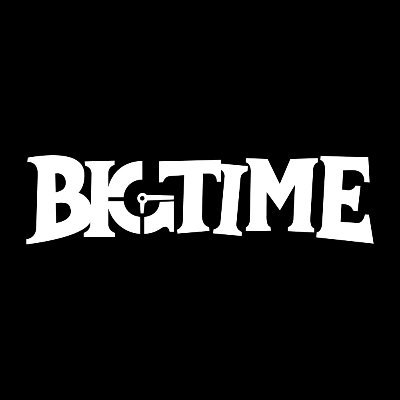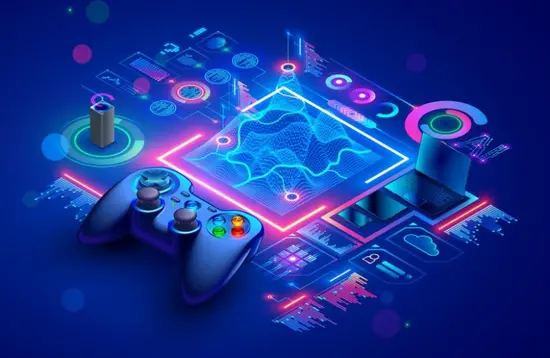BigTime has survived to this day by relying on "nested dolls."
There are many different types of research reports about BigTime online. Gold miners focus on yield, merchants, and prices, while cryptocurrency traders pay more attention to trends, consumption, and popularity. What everyone prefers to see is which game can make money, which has higher popularity, and whether there are more returns. This report is more from the perspective of the game itself, delving into the future development and solutions of blockchain games through the study of economic models.
Before that, I would like to present my current analysis and views on blockchain games: Currently, the direction of most blockchain games may not be correct; Play to Earn might be a false proposition. Play is the priority, Earn is just an addition; Play and Earn is the development trend of blockchain games.
The article mainly includes:
BigTime Strategy Analysis
BigTime Economic Model Analysis
Analysis and Outlook
BigTime Basic Information
### 1. How does BigTime operate?
First, the conclusion:
The production team of BigTime clearly understands that the Earn aspect of Play to Earn is too obvious, so they want to create a game with stronger playability. Therefore, they have made BigTime close to a Web2 gaming experience, focusing more on playability and graphics, while placing the economic system and skins on the blockchain. However, in essence, although BigTime is very close to Web2 games in terms of playability and graphics, it does not guarantee success. Considering that game developers worldwide release thousands of games every year, achieving success is extremely difficult because, in such a survival-of-the-fittest market environment, it cannot be guaranteed that players are coming to play BigTime because it is fun.
Nevertheless, BigTime's exploration in blockchain gaming is successful; the entry of countless gold mining guilds has not severely affected the game's economic system. What is the reason behind this? We have summarized three points:
Horizontal + Vertical Reservoirs
Player Type Balance
Strong Centralized Control
#### 1. Horizontal + Vertical Reservoirs:
Horizontal and vertical reservoirs can be understood as nested structures. Horizontal refers to the nesting from gameplay, while vertical refers to the nesting from the game economy. Multiple rounds of horizontal and vertical nesting gradually form a complex, long-term, and retained mining and selling process, further extending the game's lifespan.
In BigTime, horizontal nesting mainly refers to the switching of game scenes/dungeons/characters, such as switching between different scenes like snowy mountains and forests. Continuous upgrades in gameplay and playability are made, while vertical nesting focuses more on weapon upgrades, armories, forges, and time wardens. Different time wardens and forges have different levels; for example, time wardens have ten rarities and five models, resulting in nearly 50 combinations when all rarities and models are combined. Functional NFTs like forges and armories have hundreds of combinations. We can understand that each combination is a reservoir (fund pool), and this reservoir and fund pool are the core equipment for gold mining (generating $BIGTIME tokens), which prevents players from simply mining and selling, creating a chain of interconnected assets.
From the perspective of token acquisition, players need to purchase space in the secondary market and then buy time wardens. Time wardens can produce hourglasses, which require time crystals for charging. Once the time crystals are fully charged, they need to be placed in a slot to produce $BIGTIME tokens. This leads to the high cost of producing $BIGTIME tokens, making it impossible for users to complete mining and selling in the short term, while the various reservoirs in the game further reduce the demand for players to sell for cash.
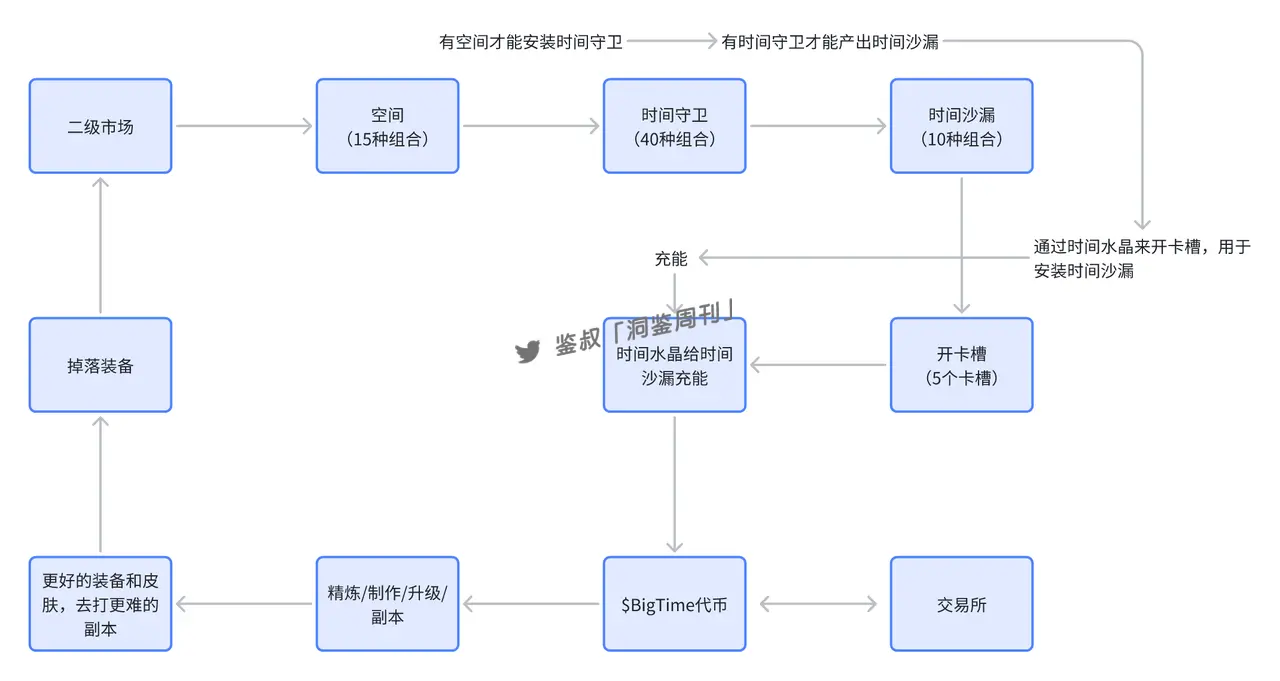
#### 2. Player Type Balance
BigTime categorizes players into four main types: ordinary players, gold miners, landlords, and spenders, with gold miners further divided into different types.
Ordinary Players: Primarily focused on experiencing game content, including free-to-play players, who pay more attention to gameplay.
Gold Miners: Primarily focused on earning profits by acquiring and selling NFTs and tokens through the game, indifferent to playability.
Landlords: Balancing between game playability and gold mining profits, earning income through renting out NFTs.
Spenders: Value game content and fun, seeking more recognition and emotional value through gameplay.
BigTime adapts the gaming experience for different player types to achieve a closed loop, allowing gold miners to focus solely on mining while spenders enjoy the game while consuming the output of gold miners. Ordinary players act as lubricants for the game, indirectly injecting liquidity into the game, ensuring smooth gameplay, while landlords can rent equipment to gold miners, spenders, and ordinary players to meet the needs of different players. Ultimately, the game can provide a sense of honor to spenders, entertainment to ordinary players, and profits to gold miners.
With the emergence of different gold mining merchants, the current drawbacks of the game are also quite evident. For example, there are almost no equipment merchants currently, as the number of true spenders in the game is still insufficient, leading to slow operation of the overall skin economy due to insufficient consumption. The essential guards and hourglasses for gold mining, although subject to official intervention, still maintain high prices, resulting in significant price discrepancies among various assets. At the same time, there is insufficient consumption of $BIGTIME tokens (single token) and crystals (gold standard), with not enough application scenarios.
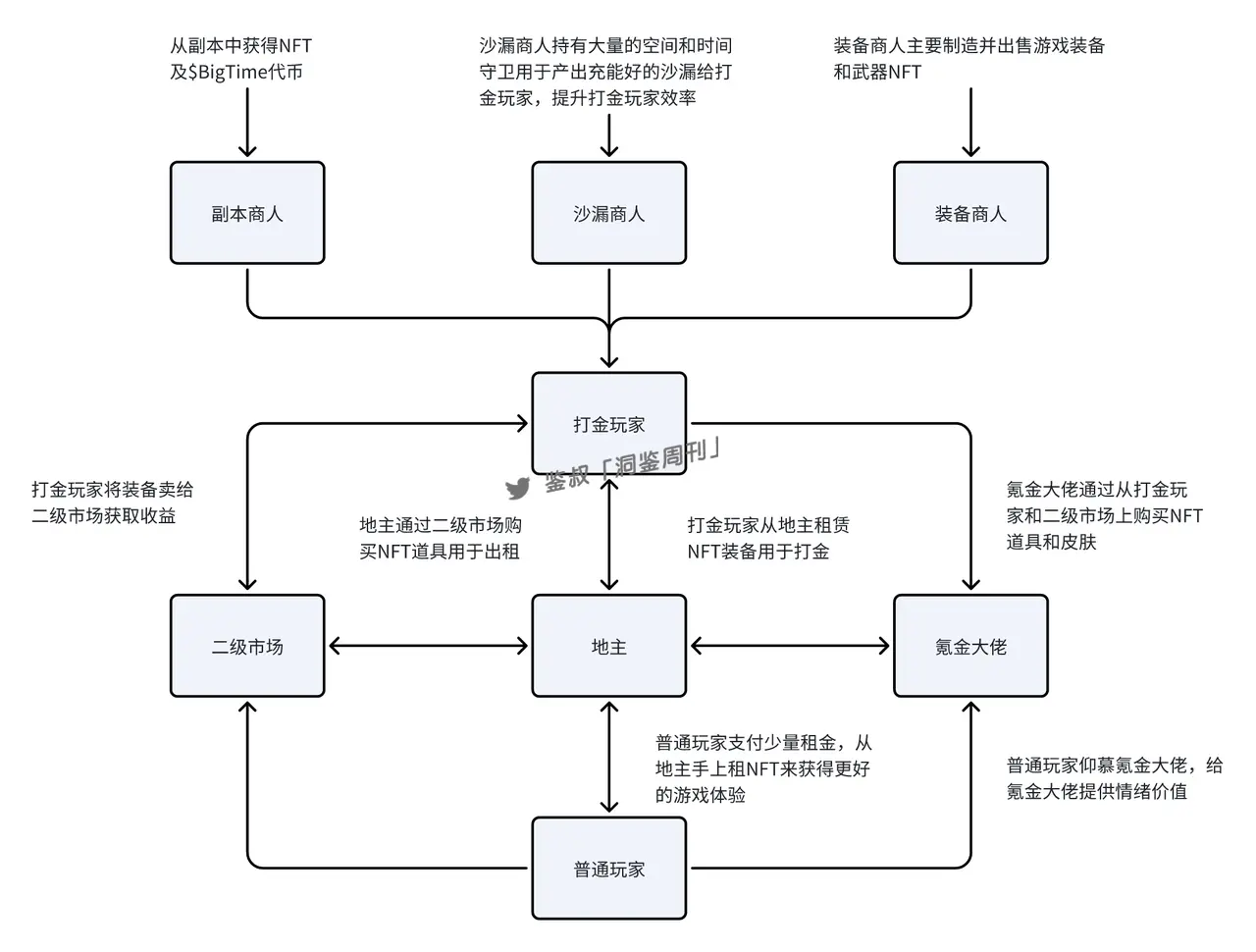
Regarding the balance between gold miners and ordinary players, BigTime aims to maintain a ratio of 10% blockchain (gold mining) players to 90% traditional players to ensure stable economic development. Although BigTime has not directly stated how to control the ratio of gold miners to traditional players, various signs indicate that the number of traditional players is severely lacking. From the prices of goods, it can be seen that the prices of forges and armories used to produce skin NFTs are very low, while the prices of time wardens essential for gold mining remain high. Additionally, the game's promotion in the Web2 field is also insufficient, as its promotional model still follows the conventional path of Web3 blockchain games.

The leasing system, in a sense, is akin to staking and lending, i.e., DeFi gameplay. Many game developers now believe that rather than staking tokens, it is better to stake NFTs, which can also reduce market circulation, effectively acting as staking. In a stable market, long-term stable rental income will discourage players from selling NFTs, achieving the goal of locking assets. However, for gold miners, acquiring weapons and equipment at low prices will further lead to a decline in gold mining income, which needs to be resolved through natural market regulation and official intervention.
In summary, the leasing system can allow NFT lessors to achieve the goal of indirect asset locking, but it heavily relies on the long-term stability of market prices. If the market cannot stabilize, there is a high risk of a death spiral. The following diagram illustrates the potential returns under ideal conditions.
#### 3. Strong Centralized Control
Strong centralized control is mainly reflected in the macro-control of the game economy by the game developers. Frequent short-term adjustments may annoy many players, but from a long-term perspective, they may have positive significance for the game.
At the beginning of the season, the officials discovered that due to the extremely low cost of charging hourglasses, a large number of time wardens were producing hourglasses, leading to a serious oversupply of hourglasses in the short term. The officials intervened in a timely manner, increasing the charging cost of hourglasses to balance the role of time wardens. However, this incident also led to the emergence of time merchants, who specialize in selling hourglasses. Subsequently, as time wardens are key functional NFTs for producing $BIGTIME tokens, some began to monopolize the business, causing the price of the lowest-level time wardens to increase tenfold in a short period. Upon noticing this, the officials intervened again by increasing the airdrop volume and drop rates to control NFT prices. For strong centralized control, transparency is key. The BigTime officials stated that all $BIGTIME tokens can only be produced through the game, eliminating the possibility of massive unlocks.

### 2. BigTime Economic Model Analysis
#### Skins:
For many traditional Web2 games, players must recharge to purchase desired skins and items, which also leads to most game skins and items being non-resellable. This operational model prevents many players from monetizing items; if they want to sell, they can only sell their accounts, but their value will significantly depreciate. For game developers, this one-size-fits-all approach also reduces the possibility of inflation to some extent.
For BigTime, it focuses more on the development of the skin system, with the overall trading circulation model similar to CS:GO. Taking CS:GO as an example, players pay fiat currency to obtain weapon cases and keys, then draw different levels of game skins from the weapon cases. Game skins can be traded on external platforms, thus giving rise to a market focused on CS:GO trading, such as NetEase's buff.
BigTime mainly produces NFT skins through in-game armories/time wardens, with the produced skins being limited and never increased. At the same time, NFT skins can be freely traded on-chain in the game, and different NFT skins will allow players to enter exclusive dungeon content without affecting balance.

#### NFTs:
BigTime can be divided into two categories of NFTs: skin NFTs and functional NFTs. Skin NFTs are purely decorative, with no bonuses and ensuring balance. Their role is to increase user stickiness, ensuring a good gaming experience for spenders and skin merchants while showcasing player status. Functional NFTs are production tools primarily used to maintain the operation of BigTime and produce $BIGTIME tokens.
Skin NFTs can also be divided into two categories: manufacturable skins and non-manufacturable skins.
- Manufacturable Skins: Mainly generated through armories and forges, with ten levels of rarity; the higher the rarity, the more exquisite the skin.
- Non-Manufacturable Skins: Can only be obtained through monster drops and dungeon rewards, such as space decorations, weapons, armor, titles, and sound effects, with varying rarities. Non-manufacturable skins can be obtained through dungeon drops or purchased in the secondary market.
#### Space:
Space is BigTime's private virtual land, which can be understood as a home in the game. Space allows players to expand their personal metaverse and install skins. For gold miners, the two main functions are:
1. Space can obtain broken hourglasses.
2. Install functional NFTs such as forges, armories, and time wardens.
It can be understood that for players who want to formally experience BigTime and engage in gold mining, space is a necessity, as only by owning space can they generate $BIGTIME tokens and earn profits. Space is mainly divided into small, medium, and large sizes, with each size having five levels and different supply amounts. Larger spaces can accommodate more functional NFTs and allow for more decorations and equipment. The probability of different space levels dropping broken hourglasses also varies; rarer spaces have a higher probability of dropping broken hourglasses, and higher rarity functional NFTs can only connect to higher rarity spaces.
Space can be traded in the secondary market and can also be randomly dropped through dungeons and sand enemies, but the probability is very low.
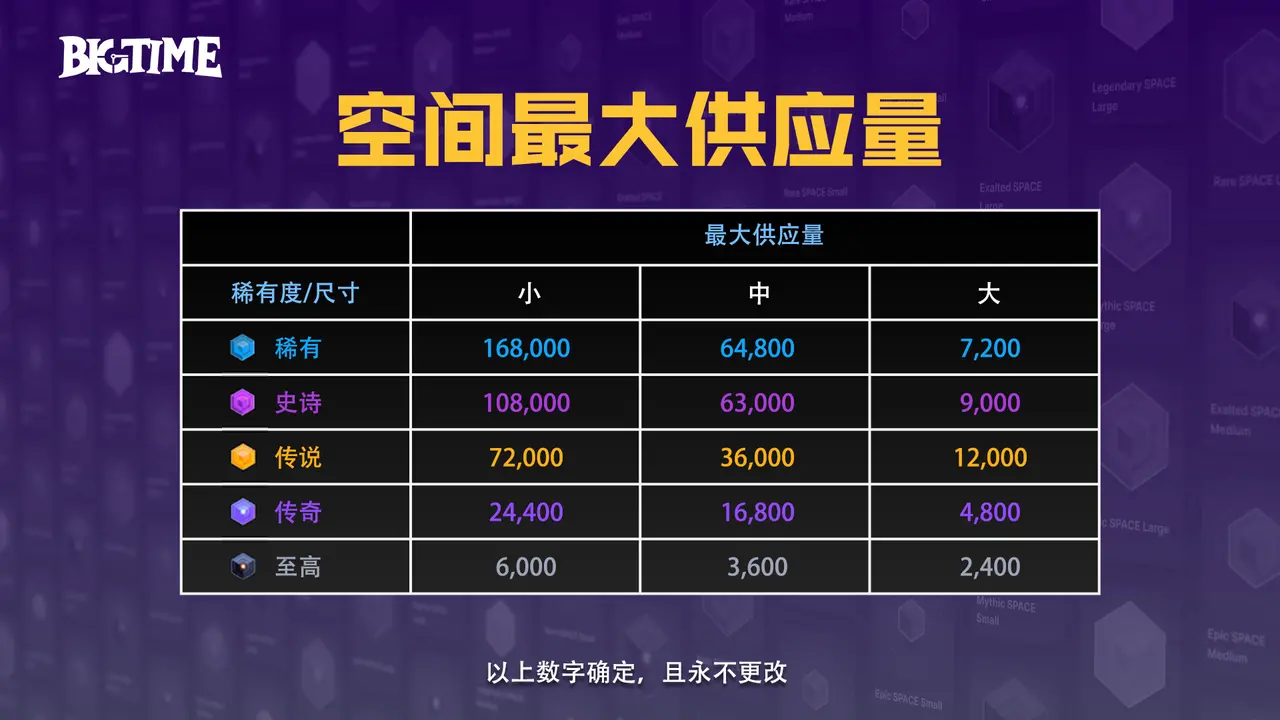
#### Functional NFTs:
Functional NFTs mainly include forges, armories, and time wardens. These three types of functional NFTs are important components of BigTime and necessary equipment for gold miners. Time wardens primarily produce $BIGTIME tokens, while forges and armories consume $BIGTIME tokens to create skin NFTs.
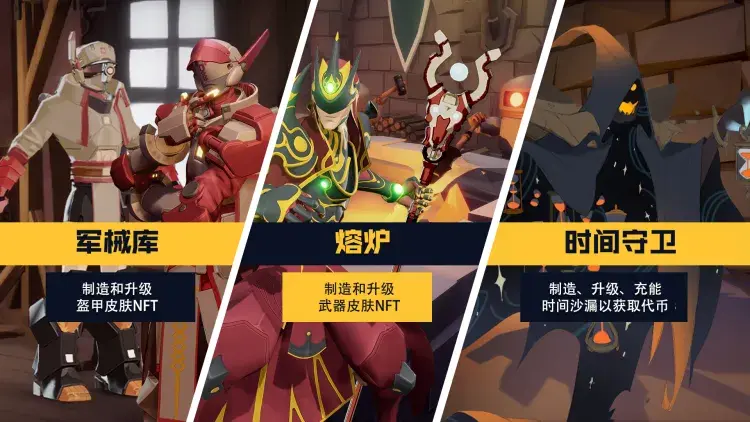
Functional NFT 1: Forge
As a functional NFT, the forge is mainly used to refine NFT weapon skin fragments, create, and upgrade weapon skins. The forge has ten levels, from ordinary to unparalleled, with different types offering different special rewards and colors. There are ten types of forges, sorted from A to J; different models of forges can provide special bonuses to different weapon skins. For example, a red A-type forge can provide a special bonus to two-handed axe weapon skins, while a rainbow-type forge can provide bonuses to all weapon skins.
The forge can only create or upgrade weapon skins that differ by one rarity level from itself. We can understand that an ordinary forge can create and upgrade rare-level weapon skins but cannot create rare-level weapon skins. The forge also comes in red, blue, green, and rainbow colors, with different colors providing different bonuses; for instance, red provides speed bonuses, blue provides efficiency bonuses, green provides luck bonuses, and rainbow provides all bonuses. Additionally, installing different forges in one space will yield extra bonuses.
In summary, the composition of the forge is quite complex, and we can simplify it again:
The forge has ten levels, from ordinary to unparalleled, with different rarities.
The forge has ten types, sorted from A to J, each providing special bonuses to different weapon skins.
The forge has four colors: red, blue, green, and rainbow, with different colors forming sets and providing extra bonuses.
In addition, the forge can consume $BIGTIME tokens for weapon creation and upgrades, and the forge can be upgraded to gain better manufacturing capabilities.
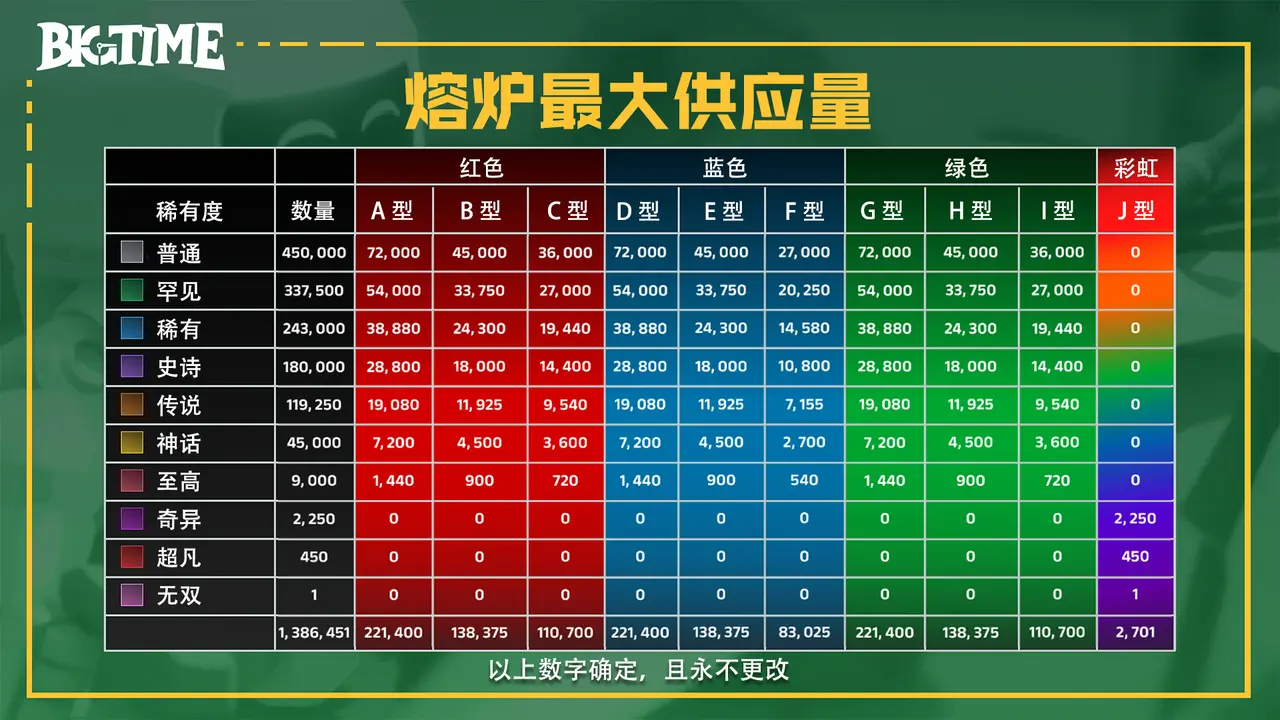
Functional NFT 2: Armory
The armory is mainly used to refine skin fragments, create, and upgrade armor skins. The forge focuses on weapon skins, while the armory focuses on armor skins. The attributes and properties of the armory are almost identical to those of the forge.
Compared to the forge, the armory has the same settings, mainly:
The armory has ten levels, from ordinary to unparalleled, with different rarities.
The armory has ten types, sorted from A to J, each providing special bonuses to different armor skins.
The armory has four colors: red, blue, green, and rainbow, with different colors forming sets and providing extra bonuses.
The armory can also consume $BIGTIME tokens for armor creation and upgrades, and upgrading the armory can yield better manufacturing capabilities.
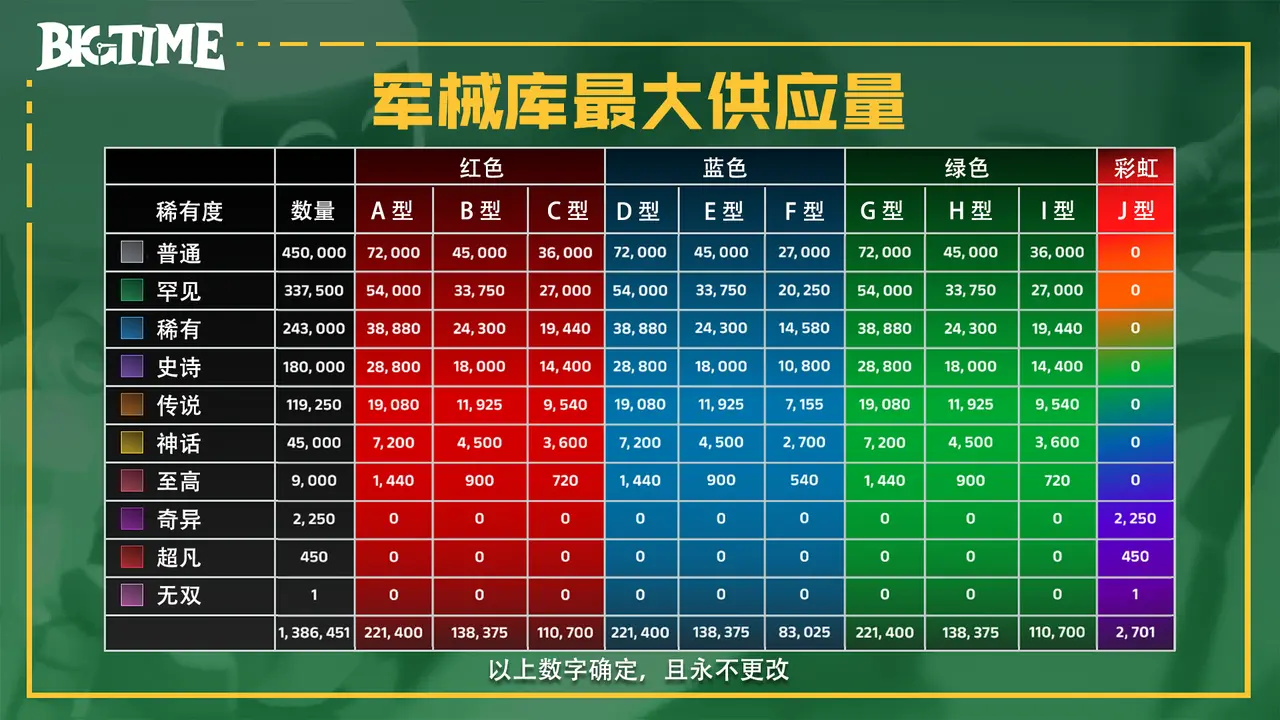
Functional NFT 3: Time Warden
The time warden is mainly used to create and replenish hourglasses, which are divided into ordinary hourglasses and broken hourglasses. Unlike the forge and armory, the time warden can only create and synthesize NFTs of the same or lower level.
The time warden has ten levels, from ordinary to unparalleled, with different rarities.
The time warden has four types, sorted from A to D, each providing special bonuses for charging and creating hourglasses.
The time warden has four colors: red-blue, blue-green, green-red, and rainbow, with different colors forming sets and providing extra bonuses.
The time warden can be created using time crystals. Consuming $BIGTIME tokens and three hourglasses can yield a higher-level hourglass, but cross-level upgrades are not possible. Different rarities of hourglasses require different amounts of time crystals and time; the higher the rarity, the greater the consumption. The time warden can also be upgraded through experience points, enhancing efficiency and unlocking luck bonuses, etc.
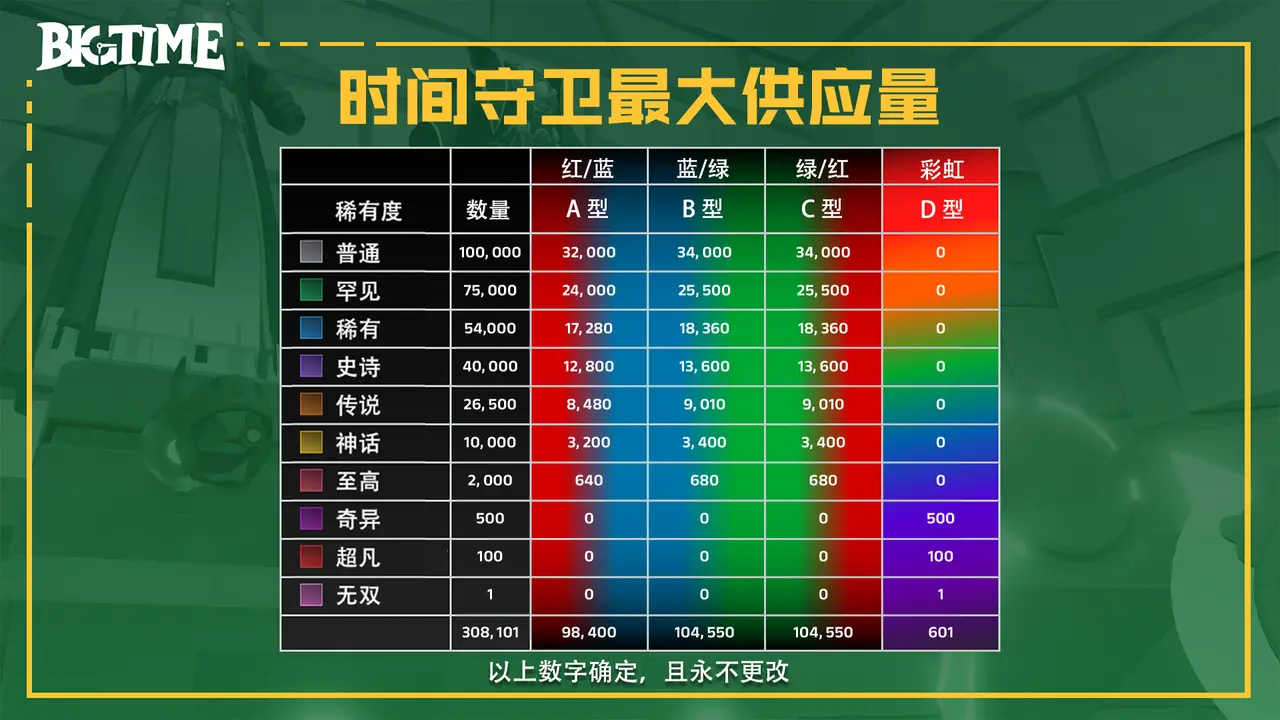
Hourglass
Hourglasses can be generated by time wardens or purchased in the secondary market. Their main function is to obtain $BIGTIME tokens. Players can open up to five slots to equip five hourglasses to maximize the output of $BIGTIME tokens. Players need to use time crystals to open slots to increase the number of hourglasses; the more slots, the higher the cost.
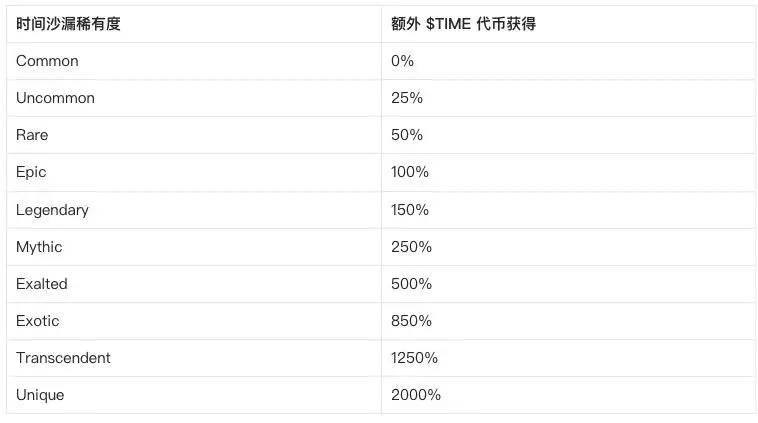
Hourglasses have ten levels, from ordinary to unparalleled, with different rarities; the higher the rarity, the more $BIGTIME tokens produced. Hourglasses will deplete their sand over time once equipped, and after depletion, they can no longer produce $BIGTIME tokens and need to be refilled by time wardens using time crystals.
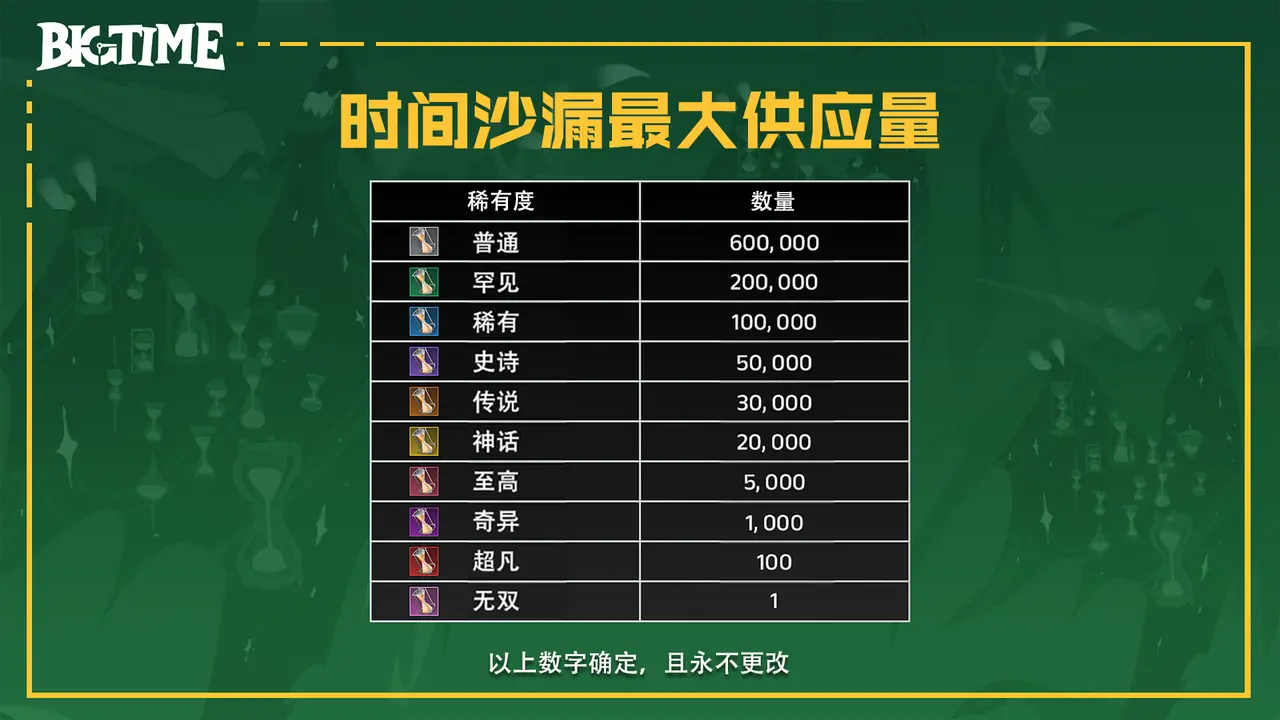
Broken Hourglass
Broken hourglasses are consumables and not NFTs. They can be equipped to obtain $BIGTIME tokens, but once the sand is depleted, they will be automatically destroyed and cannot be traded. The connection size of the space determines the number of broken hourglasses dropped, and the rarity of the space also determines the rarity of the broken hourglasses.

Summary:
Hourglasses can be purchased in the secondary market or manufactured by time wardens.
Broken hourglasses cannot be purchased in the secondary market (non-NFT) and are randomly dropped through space.
The higher the rarity of the hourglass, the more $BIGTIME tokens obtained.
### Game Resources:
Time Crystals
Time crystals are not cryptocurrencies; they are a premium currency in BigTime. They can be purchased with fiat currency in the secondary market or obtained through in-game drops (with low probability).
Time crystals are mainly used for charging hourglasses.
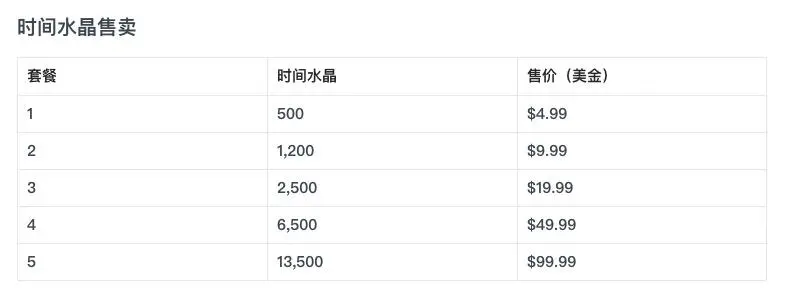
$BIGTIME Token
The $BIGTIME token is the main cryptocurrency for the economic development of BigTime, with a maximum issuance of 5 billion tokens. Players can produce them by equipping hourglasses and completing dungeons, or by importing them into the game through wallets. The main uses of the $BIGTIME token are for refining NFTs, creating and upgrading, accelerating the production of functional NFTs, and accessing high-level dungeons.
Ways to obtain $BIGTIME tokens:
Players need to purchase space in the secondary market and then buy time wardens. Time wardens can produce hourglasses, which require time crystals for charging. Once the time crystals are fully charged, they need to be placed in a slot to produce $BIGTIME tokens.
Skin Fragments:
Skin fragments can be used as basic materials to create higher-level resources in the game. They can be obtained through gameplay and purchased in the secondary market, and skin fragments are mainly divided into three types:
Forge Skin Fragments: Can be refined in the forge.
Armory Skin Fragments: Can be refined in the armory.
Wild Skin Fragments: Can be refined in the forge or armory.
Fragments change with the seasons, meaning new skin fragments will be released each season.
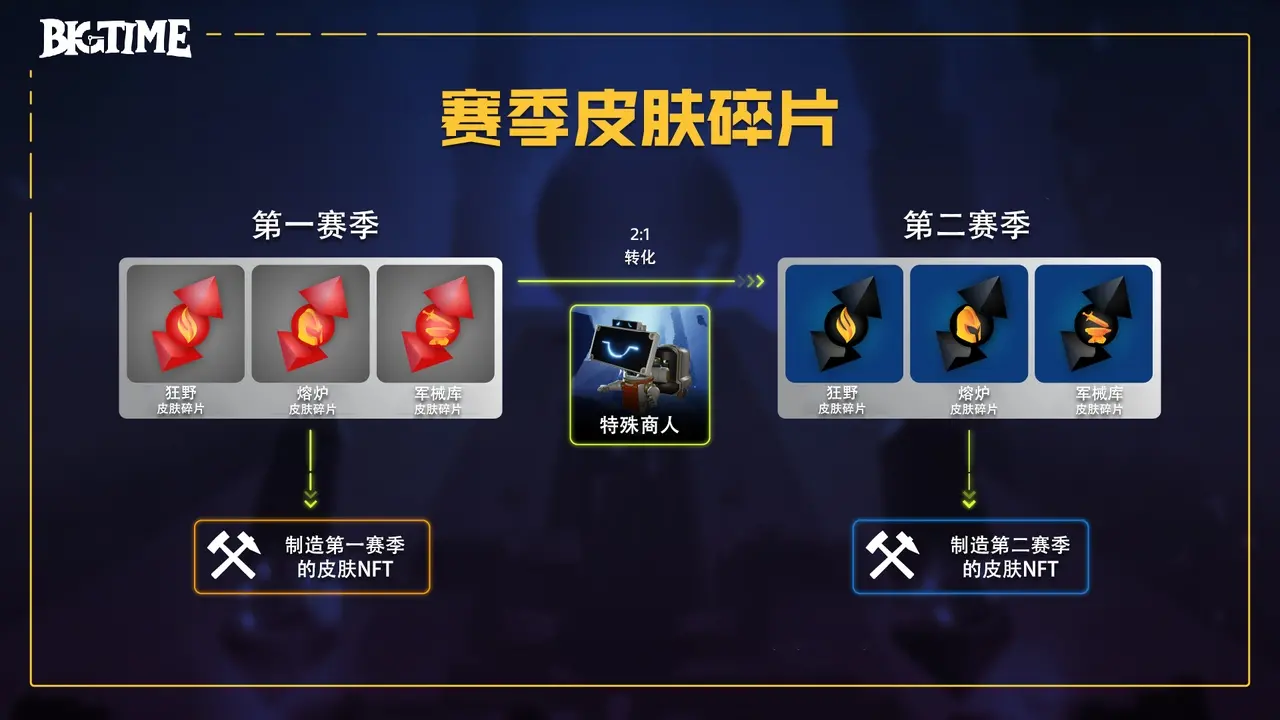
Refined Skin Fragments:
Refined fragments are mainly used for creating and upgrading skins. Refined skin fragments are also categorized by function and season, with three levels: T1, T2, T3. The higher the level, the more suitable they are for creating and upgrading in higher-level forges and armories. They can be obtained through the secondary market and random drops in the game.
Lucky Bonus Chips:
Lucky chips are used to increase players' luck in the game and enhance the output of specific activities, mainly divided into two types:
Workshop Chips: Used for bonuses to functional NFTs.
High-Level Portal Chips: Used to enhance the output of high-level dungeons.
Lucky bonus chips are non-tradable and can only be obtained through specific means, such as purchasing with time crystals or skin scraps, or as rare drops in the game.
Skin Scraps:
Resources obtained from dismantling skins, non-tradable, mainly used to purchase lucky bonus chips. The effect of dismantling and the amount of scraps produced are determined by the rarity of the skin.
### 3. Analysis and Outlook
Current Drawbacks of Blockchain Games:
Returning to the initial outlook on blockchain games, why do we say that Play to Earn is a false proposition? Ultimately, it is simply because current Web3 games are not fun. Compared to Web2 games, the barriers have increased, and the games have become harder to play. If one wants to have fun, why play them? Currently, we believe that the blockchain game market is still in its early stages. The initial explosion of Axie showed people the potential of blockchain games, but it seems everyone has only focused on the Play to Earn aspect. Perhaps only by breaking out of the Earn trap can games develop better.
GameFi tokens need certain application scenarios, but many tokens are only useful within their own games and have no utility elsewhere. Meanwhile, compared to Web2 games, most of the investment in Web2 games goes into research and development. Some top games even spend hundreds of millions to create games that are more enjoyable and realistic because, for Web2 games, only by making the game well can the user base grow, and the game can survive. In contrast, most investments in Web3 games are in marketing, as for many projects, simply issuing tokens and airdrops can earn a quick profit. Why spend money on game development?
Therefore, we cannot help but ponder: the gaming community can be divided into project parties and users. The project parties want to make money from games, while users also want to make money from games. So, who are they making money from together?
Future Outlook:
We believe that games must provide players with non-financial/money attributes of experience, meaning that the earn aspect should not be too heavy, but rather return to the essence of the game. Social interaction + fun gaming experience may be the key to whether a game can succeed, whether it is a Web3 game or a Web2 game. Taking StepN as an example, its success lies in opening up a new way of playing blockchain games, making people realize that Play to Earn can be played this way, transforming play into running and exercise, while earn adds additional benefits like health to the purely financial returns, thus breaking through in terms of fun and playability.
What are the pleasure points?
Pleasure points are experiences in gaming that bring joy, satisfaction, and fun. For example, the feeling of catching a rare fish in Animal Crossing, or the moment of unboxing a golden skin in CS:GO, or the moment of finally defeating a boss in Sekiro after days of practice—these are all pleasure points. It is precisely because of the design of these pleasure points that players become increasingly fond of and obsessed with games, leading them to actively spend money on the game.
The Importance of Social Interaction in Games:
Looking at current Web3 games through the lens of games like "Rate the Land," most blockchain games overlook the importance of player interaction. Taking "Rate the Land" as an example, its most crucial aspect is the social system.
"Rate the Land" is an SLG game, and its success hinges on its social attributes. In the game, if one wants to move or attack another's territory, the most important thing is to join an alliance. Through alliances and battles, players gradually grow. In the game, spenders have more money but less time, focusing on concentrating resources to confront challenges, while ordinary players have less money but more time, helping the alliance pave the way, giving everyone their own tasks. The existence of alliances creates a sense of belonging. In alliance battles, the leader needs to command everyone, which necessitates communication, greatly increasing the frequency of interaction in the game. It is this feeling of "I exist with the alliance; without the alliance, I do not exist" that makes many people obsessed with the game, with the bonds of alliance and brotherhood being particularly important. Similar models can be seen in games like "Fantasy Westward Journey," "Peacekeeper Elite," and "Egg Party," all of which bind players through social attributes, making them willingly recharge for the game.
In conclusion, a few years is not enough for blockchain games to quickly find solutions to complete what Web2 games have achieved over decades. From Japan's Famicom to today's PS5, from GTA1 to GTA5, from Pac-Man to Red Dead Redemption 2, the entire market has gone through countless iterations and developments. Currently, Web3 games are still in a very early stage. Although the road is bumpy, the future remains bright.
### 4. BigTime Basic Information
BigTime officially began testing in April 2022. It is an MMORPG game, with gameplay similar to World of Warcraft + Diablo. Compared to Web3 games, its graphics are more refined, and the gameplay and experience are better.
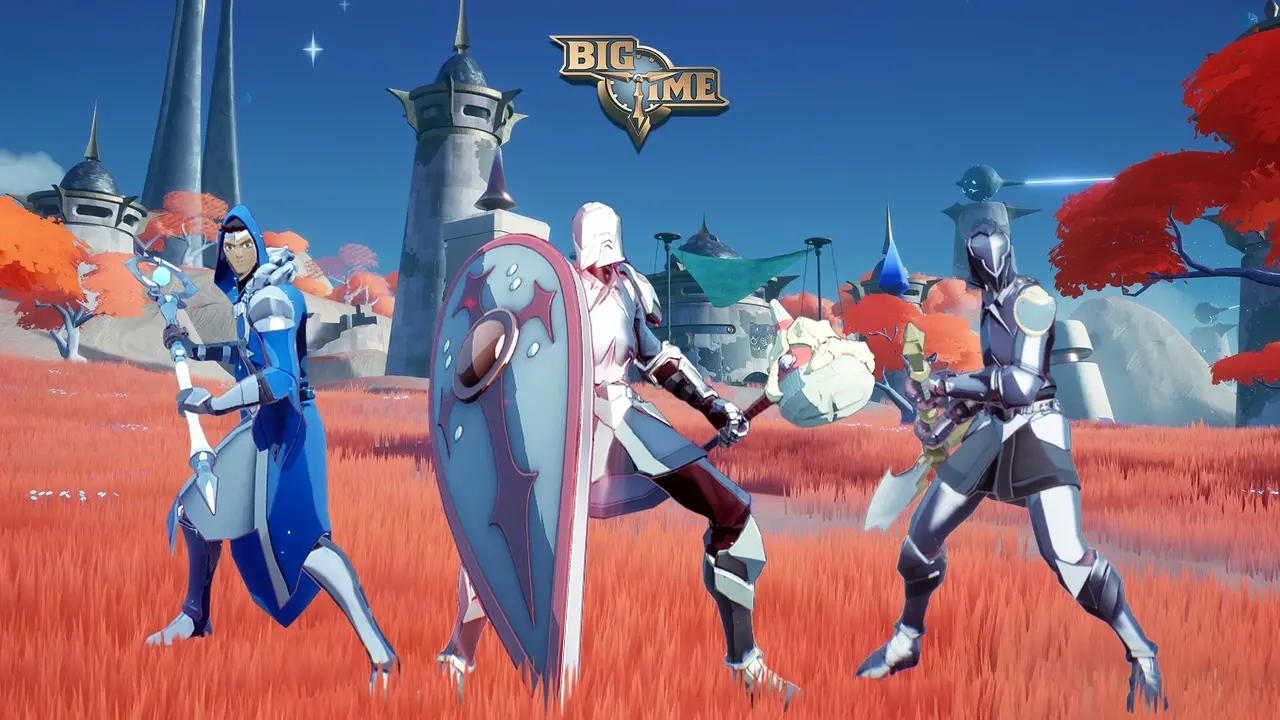
### Team:
The development team comes from game production companies like Fortnite, Call of Duty, and League of Legends, with rich game development experience.
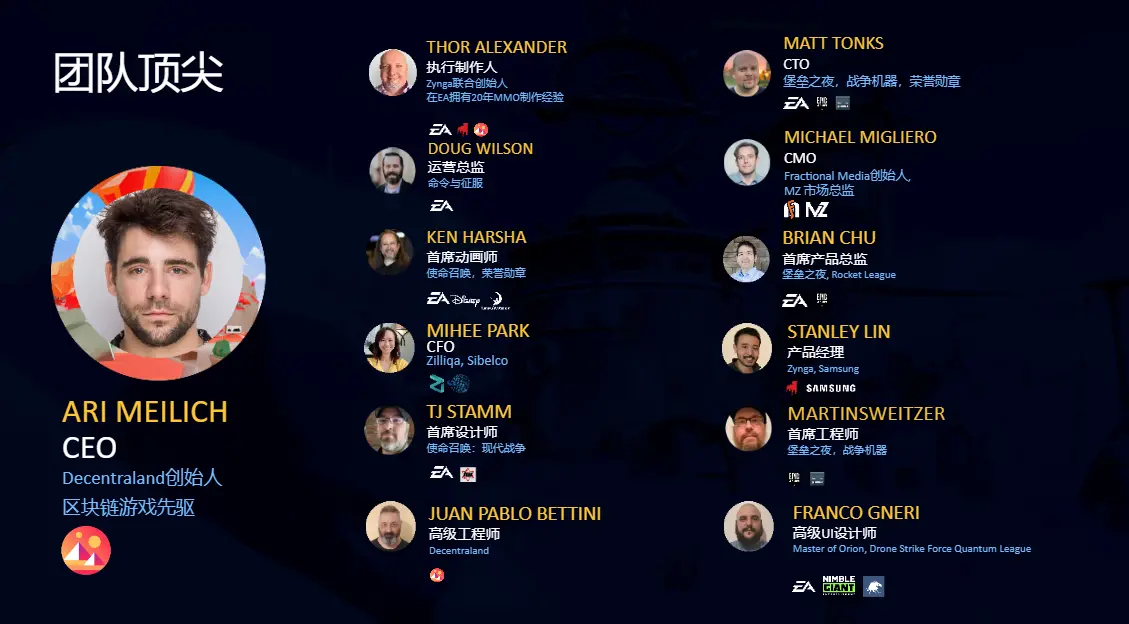
### Financing:
In May 2021, the game completed $21 million in financing, led by FBG Capital. In March 2022, BigTime completed two NFT sales, and in December, it completed a third sale, accumulating $70 million in revenue. After deducting operational costs, the team currently has nearly $90 million for game development.
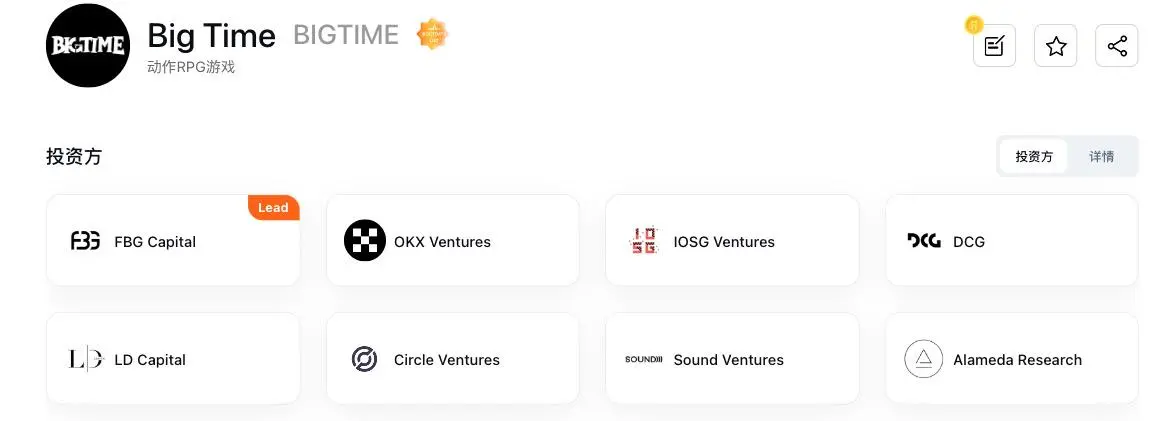
### Token:
In October 2023, the game launched its complete economic model and issued $BIGTIME, which rose fivefold within a week, with a peak price close to $1.
Market Cap: $161 million
Price: $0.1786
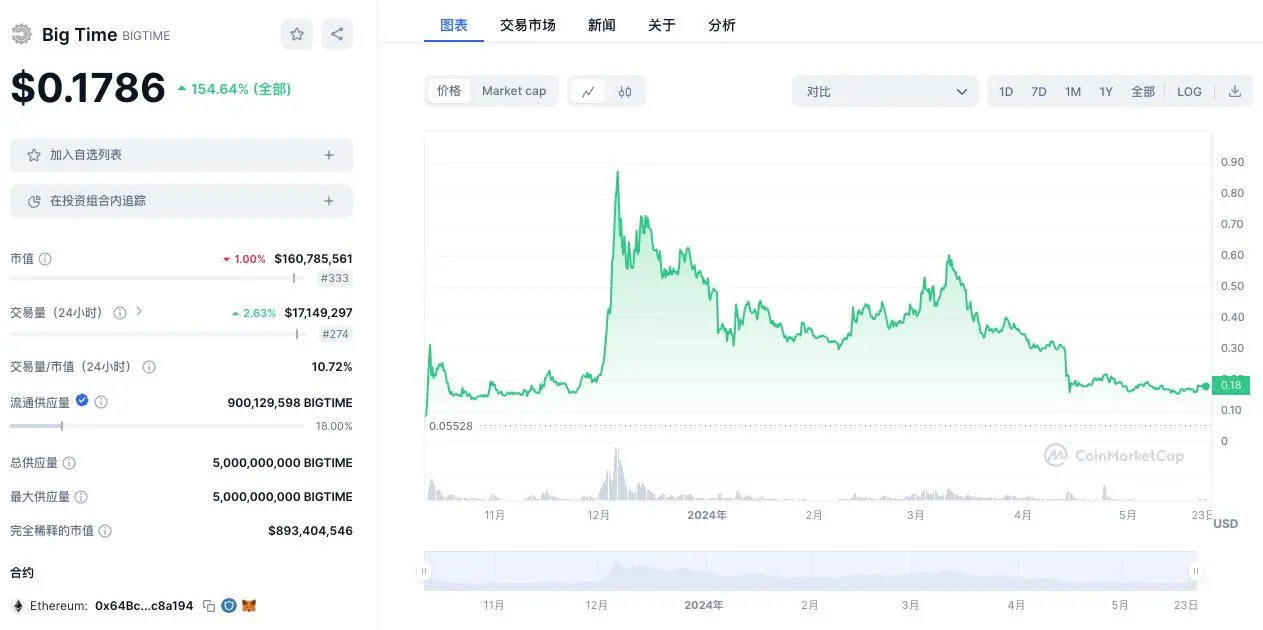
### Entry Barriers:
From the perspective of game entry barriers, the game does not have high computer configuration requirements. A game invitation code is needed to enter, but the difficulty of obtaining it is low.
From the perspective of funding entry barriers, the game supports payment via bank cards and virtual currencies, and transactions can also be made in the centralized official mall, making the entry barrier low.
From the perspective of login barriers, the game only requires an email login, with no need to connect a wallet, providing a good experience for transitioning Web2 players.
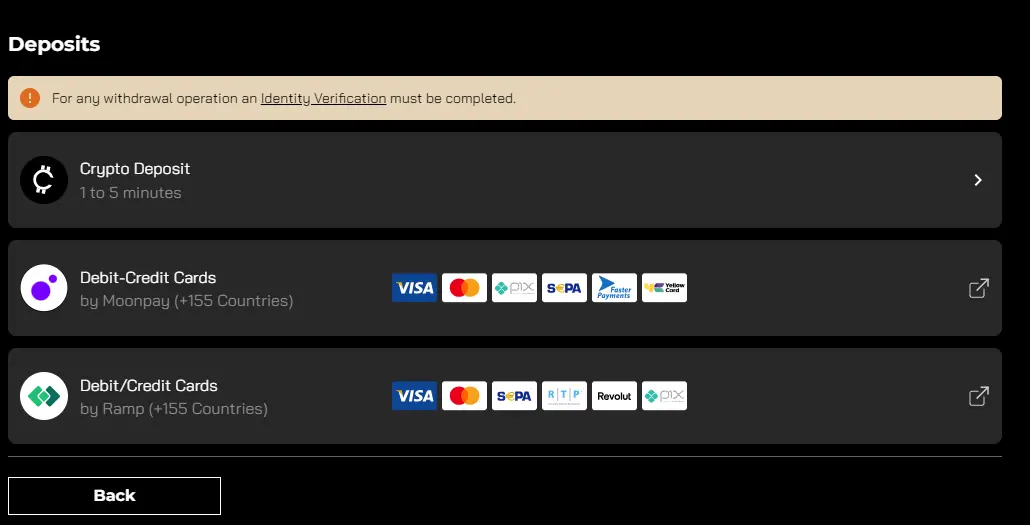
Reference:
https://www.chaincatcher.com/article/2103308
https://mirror.xyz/iamwgg.eth/HAoZR4dbEEghw4ql7fEeaXLeAPGiRronSDjGCpMZC-4
https://zhuanlan.zhihu.com/p/589546502
https://mp.weixin.qq.com/s/_hHSgyBmk3TbmX8qRcOcHQ
https://wggdao-creators.notion.site/Gamefi-4a00654d87ae415fb7cfb564c53493ce






